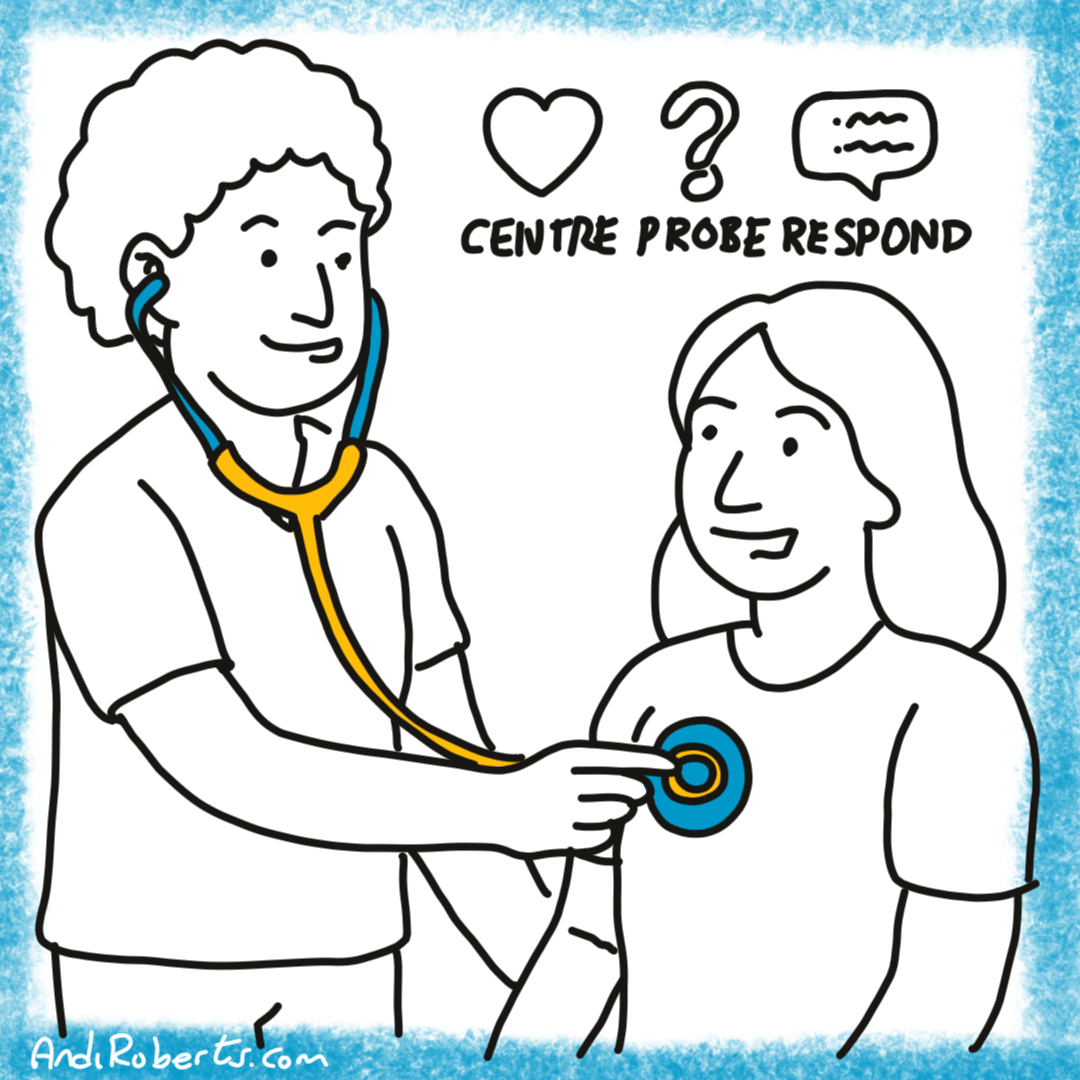There comes a time in many leadership journeys when the work that once felt purposeful begins to lose its vitality. The meetings continue, the metrics are met, and yet something underneath seems to have dulled: a sense of spark, of aliveness, of meaning. Nothing is broken, but something feels missing.
This quiet erosion is more common than we admit. Gallup (2023) found that fewer than one in four leaders describe themselves as engaged and thriving. The same research points to a troubling pattern: leaders are not disengaged because they lack skill, but because they have lost connection to purpose. Deloitte (2022) highlights a widening purpose gap, the distance between what organisations say they value and what employees actually experience. In many organisations, leadership has become a performance of competence rather than a practice of meaning.
The irony is that leadership, at its essence, should be a deeply meaningful act. It asks us to inspire, to create, to help others grow. Yet the structures that enable leadership, accountability systems, targets, governance, and constant connectivity, often reduce it to maintenance. The calendar becomes crowded with obligations that leave little time for reflection or authorship. Over time, the role that once felt self-directed begins to feel externally scripted.
McKinsey (2023) observes this drift as the erosion of self-authorship. Leaders are often so busy shaping outcomes that they stop shaping the experience of leading itself. What began as a calling can slowly turn into a contract. This is not classic burnout. It shows up as a quiet disengagement, a fatigue that hides behind productivity. You might still care deeply, but that care feels distant. You might deliver results but feel disconnected from their meaning. You might even question whether leadership, as it currently exists, still feels like yours.
That question, how can I find more meaning in my leadership role, is not an indulgent one. It is a developmental question. It asks: what does it mean to keep leading in a way that still feels alive?
What is job crafting – a leadership perspective
One powerful answer comes from the field of organisational psychology. Over twenty years ago, Amy Wrzesniewski and Jane Dutton introduced a concept that reshaped how we think about meaning at work. They called it job crafting: the process of redesigning your work from the inside out (Wrzesniewski and Dutton, 2001).
Their insight was radical in its simplicity. Work is not fixed. Even within the boundaries of a formal job description, people make thousands of small choices that define how they experience their role. Some perform their tasks mechanically, while others in the same position find ways to make the work an expression of purpose. The difference lies not in structure but in authorship.
Wrzesniewski and Dutton identified three ways people shape their work:
-
Task crafting involves altering what you do and how you do it.
-
Relational crafting means changing who you interact with and how those relationships function.
-
Cognitive crafting is about reframing how you think about your work and the story you tell yourself about why it matters.
Each dimension invites a small act of design. Together, they form a practice of meaning-making that any leader can begin, not through major reorganisation but through daily awareness and choice.
Subsequent research deepened these ideas. Bakker, Tims and Derks (2012) found that people who craft their jobs increase access to resources such as autonomy and feedback while reducing exposure to energy-draining demands. The result is higher engagement, creativity, and resilience. Gallup (2023) confirmed this empirically: employees who regularly use their strengths in shaping their work are more than six times as likely to be energised and committed. Meaning, it turns out, is not something an organisation provides. It is something people co-create through the way they work.
For leaders, this insight is especially relevant. Leadership work is often shaped by the needs of others, the organisation, the team, the board, the customer. It becomes easy to lose sight of what energises you. The work can become a system of expectations rather than an expression of identity. Deloitte (2024) refers to this as the exhaustion of alignment, the fatigue that comes from constantly meeting external expectations without refuelling the internal sense of purpose.
Job crafting offers an antidote. It reframes leadership not as something imposed but as something designed. The question shifts from “how can I manage all this?” to “what part of this is mine to shape?” That shift, from compliance to authorship, is where meaning begins to return.
The inner architecture of crafting
At its heart, job crafting is about awareness. It asks you to notice where your work feels alive and where it has gone numb. It starts with curiosity rather than control. The three forms of crafting: task, relational, and cognitive, are not separate interventions but different lenses through which to observe your relationship to work.
Task crafting is about the what. It involves examining your activities and responsibilities, not to do less, but to do more of what matters. This could mean delegating tasks that drain energy, taking on projects that stretch curiosity, or redesigning how you approach routine work. McKinsey (2021) found that leaders who intentionally protect around 20 percent of their time for deep work or reflection report higher decision quality and satisfaction. Meaning often hides in how we use our hours.
Relational crafting is about the who. Meaning is social; it grows through connection and community. Leaders who intentionally shape their networks, building relationships that energise, challenge, and renew, experience higher engagement and trust. Cross, Baker and Parker (2003) found that leaders with strong relational energy networks are significantly more creative and resilient. When we craft our relationships, we also craft the emotional climate of our teams.
Cognitive crafting is about the why. It is the act of reframing your role, seeing yourself not as a manager of tasks but as a contributor to a larger purpose. This is the deepest form of crafting because it redefines identity. Harvard Business Review (2023) describes this as meaning reconstruction, the process of interpreting daily work in a way that connects to long-term purpose. Leaders who do this consistently are rated as more inspiring, not because their jobs change but because their mindset does.
These forms of crafting interact dynamically. Task adjustments free time for better relationships. Better relationships make perspective-shifting easier. A renewed perspective clarifies which tasks matter most. Over time, the cycle reinforces itself: a pattern of self-renewal that sustains meaning even in demanding contexts.
The evidence across studies points to a clear conclusion: meaning is not a finite resource. It can be renewed through conscious design. The Yale Center for Emotional Intelligence (2022) found that leaders who experience their work as self-directed and purposeful show higher vitality and optimism, both predictors of sustainable performance.
Beyond the data, job crafting invites a return to agency. It reminds leaders that meaning is not waiting at the next promotion or hidden in a new strategy. It is already present, scattered through the small choices of each day: what you focus on, who you listen to, and how you interpret what happens.
Peter Block (2009) writes, “We are not here to live out someone else’s script.” Job crafting is the quiet rebellion against that script. It is how leaders re-enter their work as authors rather than actors.
Consider the difference between a leader who sees their week as a list of obligations and one who sees it as a set of opportunities to create meaning. The meetings are the same, the outcomes may even be the same, but the experience is entirely different. The second leader experiences leadership as an act of creation. The first experiences it as an act of endurance.
This distinction between creation and endurance is not theoretical. It shows up in tone, presence, and culture. Deloitte (2024) calls this micro-autonomy, the degree of choice people feel in shaping their day-to-day work. Teams led by high-micro-autonomy leaders report stronger trust and psychological safety. When leaders craft visibly, they model permission for others to do the same.
The act of crafting, then, becomes both personal and collective. Personally, it reconnects you to purpose. Collectively, it signals that work can be human again, that agency is allowed, even expected. This is how cultures of meaning begin: not with top-down initiatives but with leaders who quietly model authorship.
Task crafting – reclaiming energy and focus
The first doorway into job crafting is through the work itself. Task crafting is the process of shaping what you do and how you do it so that your daily work better aligns with your strengths, curiosity, and sense of purpose.
Research from McKinsey (2021) and the London Business School (2022) found that leaders who step back to assess their calendars and remove or redesign low-value tasks report higher energy, focus, and performance. The act of noticing where energy is lost is the beginning of reclaiming it.
Task crafting starts by mapping your current reality. Over a week, note every significant activity and rate how it affects your energy. Patterns emerge quickly. Some tasks may be necessary but could be done differently. Others might have outlived their relevance. Seeing these patterns makes change possible.
Once awareness grows, small redesigns can follow:
-
Combine repetitive tasks into focused blocks rather than scattering them through the day.
-
Delegate activities that do not require your expertise.
-
Simplify approval or reporting processes that consume time without adding value.
-
Add tasks that stretch curiosity, such as mentoring, learning projects, or reflection.
Bakker, Tims and Derks (2012) found that employees who proactively adjust their work to align with personal strengths experience higher engagement and lower burnout. The same applies to leaders. Small shifts in what you do can reawaken agency and restore authorship over time.
Harvard Business Review (2022) reported that executives who set aside ten percent of their week for unstructured reflection or creative thinking outperform those who fill every moment with meetings. Productivity is not about fitting more into the day; it is about giving more of yourself to what truly matters.
A weekly practice helps anchor this. At week’s end, list three activities that gave energy and three that drained it. Then ask: what might I change next week to shift the balance? Over time, these small choices accumulate into a rebalanced portfolio of work.
Task crafting is not about escaping responsibility. It is about focusing effort where it creates meaning and value. When you align tasks with the energy that fuels you, leadership becomes more sustainable. You are not merely managing time; you are designing attention.
Relational crafting – rebuilding connection and community
Meaning does not live in isolation. It is made and remade through people. Relational crafting is the practice of shaping who we connect with and how those relationships function, so that our work becomes more energising, collaborative, and humane.
Cross, Baker and Parker (2003) showed that leaders with strong relational energy networks report higher motivation and creativity. Relationships that uplift and energise us act as renewable sources of vitality.
Relational crafting begins with noticing. Ask: who gives me energy? Who helps me think differently? Who challenges me to grow? These are often the people who reconnect us to purpose.
McKinsey (2022) found that organisations with strong cross-functional connections make better decisions and adapt faster to change. When leaders broaden their networks beyond familiar circles, they gain perspectives that reignite curiosity.
Gallup (2022) found that managers who have at least one meaningful conversation with each team member every week nearly triple engagement levels. These conversations are not about performance metrics but about connection.
A practical way to begin is to map your relationship network. Draw three circles: one for people who give energy, one for those with neutral energy, and one for those who drain it. If the energising circle is small, ask what new conversations could replenish it.
Relational crafting is not about avoiding difficult people. It is about consciously shaping the ecosystem of relationships so that you and others can thrive. When leaders craft relationships intentionally, they model a form of connection that ripples outward. The tone of a team mirrors the tone of its leader.
Cognitive crafting – reframing purpose and identity
Cognitive crafting happens in the inner space of interpretation. Where task and relational crafting reshape what we do and who we do it with, cognitive crafting changes how we see. It reframes our work in a way that restores coherence and purpose.
Harvard Business Review (2023) calls this meaning reconstruction: the deliberate act of interpreting tasks in ways that connect them to values or contribution. Wrzesniewski et al. (2013) found that when individuals interpret their work as contributing to something larger than themselves, engagement and resilience rise significantly.
A leader might see their role as managing operations but reframe it as ensuring promises to customers are kept. The work remains the same, but the identity within it changes.
MIT Sloan Management Review (2023) noted that leaders who regularly step back to interpret their work in a broader context develop stronger adaptive capacity. They are less reactive and more reflective.
To begin, write a sentence describing your role functionally. Then rewrite it as a contribution: “I manage a department” becomes “I create conditions for others to do their best work.” The language of contribution reawakens purpose.
Cognitive crafting also means revisiting why you chose this field. Ask: what first drew me here? What values did this work once express? Even a small rediscovery of those motives can reignite connection.
Kegan and Lahey (2016) describe adult growth as making meaning from experience rather than being shaped by it. Cognitive crafting transforms the ordinary into purposeful and the difficult into developmental.
Integrating the facets – crafting as a leadership practice
Job crafting only becomes transformative when its three parts: task, relational, and cognitive, work together. Changing what you do frees space for better relationships. Strengthened relationships reshape how you interpret the work. A renewed perspective clarifies which tasks matter most.
Deloitte (2024) refers to this rhythm as micro-reinvention, a series of small, conscious changes that keep work aligned with who we are. MIT Sloan Management Review (2023) describes it as self-sustaining leadership, where reflection and action reinforce one another. The following practices help turn insight into a sustainable rhythm of renewal.
1. Conduct a weekly energy review
At the end of each week, list what gave you energy and what drained it. Notice patterns rather than judging them. Over time, this reflection reveals where to focus your effort and what to adjust. Bakker, Tims and Derks (2012) found that small, self-directed changes in work design increase engagement and buffer against burnout. Awareness itself becomes a resource that fuels renewal.
2. Curate your calendar with intention
Look at your upcoming week and ask: does this schedule reflect the kind of leader I want to be? If not, what small change could bring it closer? Harvard Business Review (2022) found that leaders who free even ten percent of their time for reflection, mentoring, or creative work report higher focus and wellbeing. Protecting such time is not indulgent; it is essential maintenance for clear thinking and sustained presence.
3. Reinvest in relationships that renew you
Identify the conversations that leave you clearer, more hopeful, or more curious. Make those conversations regular. Reach out to one person each month whom you respect but rarely speak with. Relationships are not fixed assets; they are living systems that require attention. Gallup (2022) found that leaders who have one meaningful conversation each week with their team members nearly triple engagement. Meaning multiplies in dialogue.
4. Reframe your narrative of contribution
Return to the story you tell about your work. Write it in a single sentence that begins with “I help…” or “I contribute to…”. Keep it visible and read it before major meetings or decisions. Wrzesniewski et al. (2013) showed that people who see their work as contributing to others experience stronger motivation and persistence. The language we use to describe our work shapes the way we lead it.
5. Create a one-month crafting plan
Choose one small action from each facet of job crafting.
For task, remove or redesign one draining activity.
For relational, invest in one energising relationship.
For cognitive, remind yourself daily of one reason your work matters.
Keep these visible and review progress at the end of the month. The goal is not completion but awareness. Deloitte (2023) notes that sustained change grows from repeated, intentional microactions rather than grand redesigns.
Reflection as the thread
Integration also depends on reflection. Without it, small acts of change remain isolated events. Kegan and Lahey (2016) describe adult growth as the process of making meaning from experience rather than being shaped by it. Reflection allows the fragments of crafting to form a coherent whole.
One way to build this habit is to end each month with a short check-in:
-
What did I change this month that made work more engaging?
-
What relationship helped me stay grounded?
-
What story about my work shifted, even slightly?
Leadership as an act of continual crafting
Leadership is not a static identity. It is a living relationship between who we are and what the world asks of us. Over time, both change. McKinsey (2023) found that leaders who experience their roles as purpose-driven sustain higher levels of cognitive energy and make better strategic decisions. Deloitte (2024) describes such leaders as renewal catalysts, people whose presence generates hope and alignment.
The deeper gift of continual crafting is humility. It reminds us that leadership is not a state we reach but a practice we sustain. Peter Block (2009) wrote that community is built one invitation at a time. Each day invites us to recreate the meaning of our work through small, deliberate choices.
Meaning is not found at the end of the journey but within the act of continuing to shape it. Job crafting is not simply a method for restoring meaning; it is a lifelong conversation between intention and action.
Before you move to the next meeting or task, take a moment to ask yourself:
-
What part of my leadership still feels alive, and what part is asking to be renewed?
-
How might I shape today’s work so it reflects more of what matters to me?
-
In what small way can I make meaning visible to those who work alongside me?
Do you have any tips or advice for creating purpose and meaning?
What has worked for you?
Do you have any recommended resources to explore?
Thanks for reading!
References
Bakker, A.B., Tims, M. and Derks, D. (2012) ‘Proactive personality and job performance: The role of job crafting and work engagement’, Human Relations, 65(10), pp. 1359–1378. doi:10.1177/0018726712453471.
Block, P. (2009) Community: The structure of belonging. San Francisco: Berrett-Koehler Publishers.
Cross, R., Baker, W. and Parker, A. (2003) ‘What creates energy in organizations?’, MIT Sloan Management Review, 44(4), pp. 51–56.
Deloitte (2022) Mind the purpose gap: How organisations can close the divide between talk and action. Available at: https://www.deloitte.com/us/en/insights/topics/business-strategy-growth/mind-the-purpose-gap.html (Accessed: 7 October 2025)
Deloitte (2023) The human sustainability index: Measuring the link between work and wellbeing. Available at: https://www.deloitte.com (Accessed: 7 October 2025).
Deloitte (2024) How leaders can fuel microcultures of autonomy and meaning. Deloitte Human Capital Trends. Available at: https://www.deloitte.com (Accessed: 7 October 2025).
Gallup (2022) State of the global workplace 2022 report. Washington, DC: Gallup Press.
Gallup (2023) State of the global workplace 2023: The voice of the world’s employees. Washington, DC: Gallup Press.
Harvard Business Review (2022) ‘The best leaders make time for reflection—and why you should too’. Harvard Business Review, 17 May. Available at: https://hbr.org/2022/05/the-best-leaders-make-time-for-reflection-and-why-you-should-too (Accessed: 7 October 2025).
Kegan, R. and Lahey, L.L. (2016) An everyone culture: Becoming a deliberately developmental organization. Boston: Harvard Business Review Press.
London Business School (2022) Redesigning leadership work: Focus, energy and meaning. London: London Business School Research Report.
McKinsey & Company (2021) Making time for what matters: The leader’s guide to deep work. Available at: https://www.mckinsey.com (Accessed: 7 October 2025).
McKinsey & Company (2022) The power of connection: How networks create organisational resilience. Available at: https://www.mckinsey.com (Accessed: 7 October 2025).
McKinsey & Company (2023) Understanding the leader’s identity mindtrap: Personal growth for the C-suite. Available at: https://www.mckinsey.com (Accessed: 7 October 2025).
MIT Sloan Management Review (2023) ‘The self-sustaining leader: How meaning drives adaptive capacity’. MIT Sloan Management Review, 64(3), pp. 48–55.
Tims, M., Bakker, A.B. and Derks, D. (2012) ‘The development and validation of the job crafting scale’, Journal of Vocational Behavior, 80(2), pp. 173–186. doi:10.1016/j.jvb.2011.05.009.
Wrzesniewski, A. and Dutton, J.E. (2001) ‘Crafting a job: Revisioning employees as active crafters of their work’, Academy of Management Review, 26(2), pp. 179–201. doi:10.5465/amr.2001.4378011.
Wrzesniewski, A., LoBuglio, N., Dutton, J.E. and Berg, J.M. (2013) ‘Job crafting and cultivating positive meaning and identity in work’, in Bakker, A.B. (ed.) Advances in Positive Organizational Psychology, Vol. 1. Bingley: Emerald Group Publishing, pp. 281–302.
Yale Center for Emotional Intelligence (2022) Leading with purpose and vitality: The role of self-direction. New Haven: Yale School of Management Working Paper.





Leave A Comment